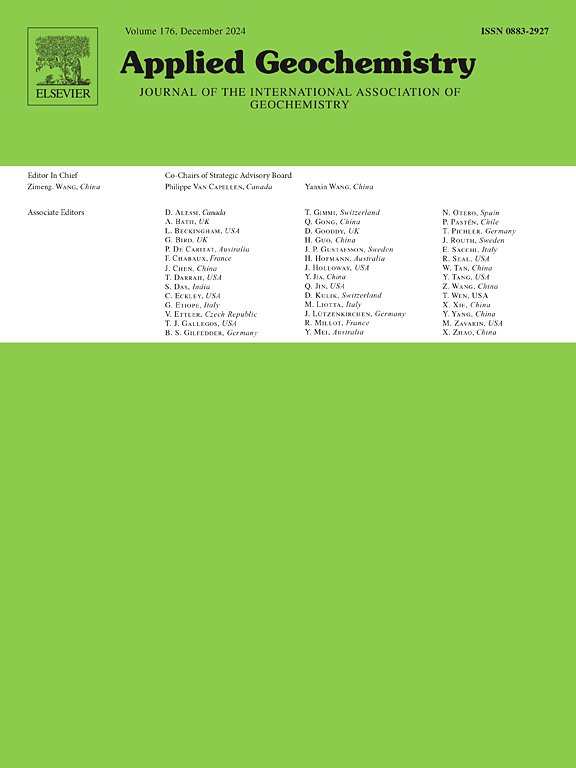Diagenesis and fluid inclusion records of the oil preservation window in a deep carbonate reservoir
IF 3.1
3区 地球科学
Q1 GEOCHEMISTRY & GEOPHYSICS
引用次数: 0
Abstract
Determining the maximum temperature or burial depth where liquid hydrocarbon is preserved (i.e., oil preservation window) is a critical scientific problem. However, large discrepancy remains in the documented oil preservation window (e.g., 150–175 °C versus >240 °C), significantly influencing our understanding of the distribution of oil in deep earth. In this study, complete diagenesis and fluid inclusion records of oil charging and cracking were discovered in a Permian carbonate reservoir from the eastern Sichuan Basin (South China). Reconstructions of the diagenesis and petroleum evolution history reveal dynamic temperature-pressure controls on oil stability. Specifically, oil can be cracked to form methane-dominated gas after heating at ≤192 °C (σ = 4) and in a hydrostatic pressure regime for ∼20 m.y. Extreme overpressure formed postdating oil cracking due to intense calcite cementation, which resulted in isolated system and favored generation and accumulation of abnormally high pressure (up to 199 MPa) hydrocarbon fluids. The new oil preservation window can be applied to normal pressure or weak overpressure reservoirs, predicting the distribution of liquid hydrocarbon in deep earth.
求助全文
约1分钟内获得全文
求助全文
来源期刊

Applied Geochemistry
地学-地球化学与地球物理
CiteScore
6.10
自引率
8.80%
发文量
272
审稿时长
65 days
期刊介绍:
Applied Geochemistry is an international journal devoted to publication of original research papers, rapid research communications and selected review papers in geochemistry and urban geochemistry which have some practical application to an aspect of human endeavour, such as the preservation of the environment, health, waste disposal and the search for resources. Papers on applications of inorganic, organic and isotope geochemistry and geochemical processes are therefore welcome provided they meet the main criterion. Spatial and temporal monitoring case studies are only of interest to our international readership if they present new ideas of broad application.
Topics covered include: (1) Environmental geochemistry (including natural and anthropogenic aspects, and protection and remediation strategies); (2) Hydrogeochemistry (surface and groundwater); (3) Medical (urban) geochemistry; (4) The search for energy resources (in particular unconventional oil and gas or emerging metal resources); (5) Energy exploitation (in particular geothermal energy and CCS); (6) Upgrading of energy and mineral resources where there is a direct geochemical application; and (7) Waste disposal, including nuclear waste disposal.
 求助内容:
求助内容: 应助结果提醒方式:
应助结果提醒方式:


